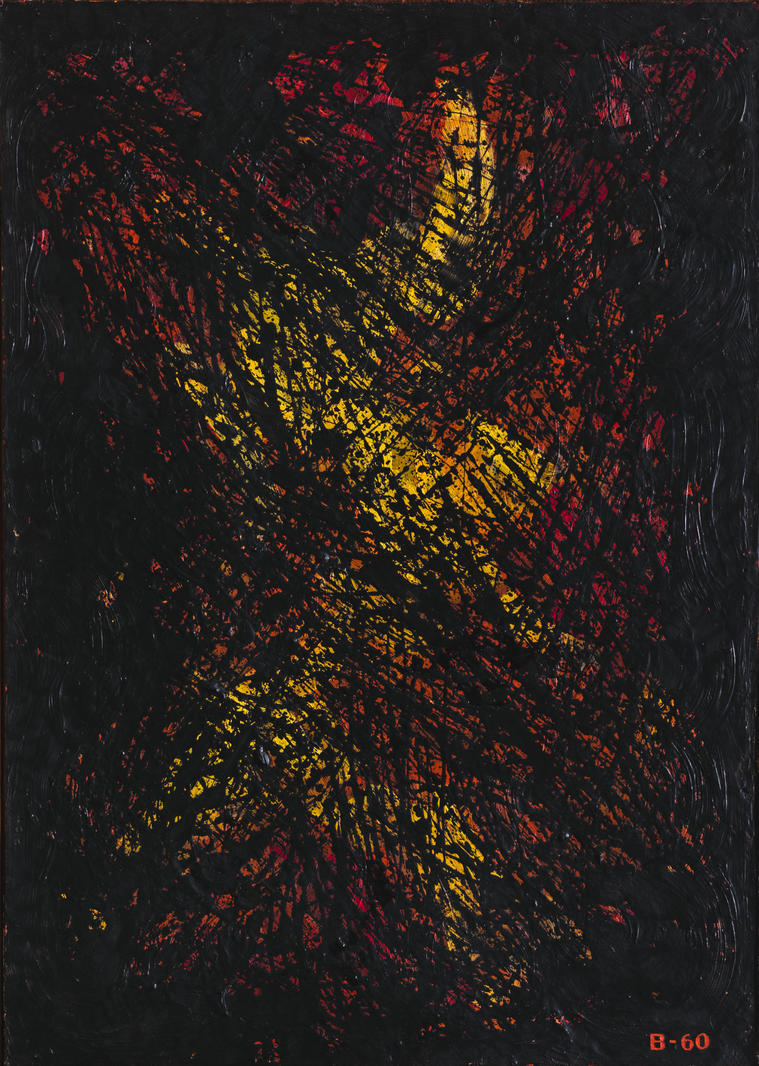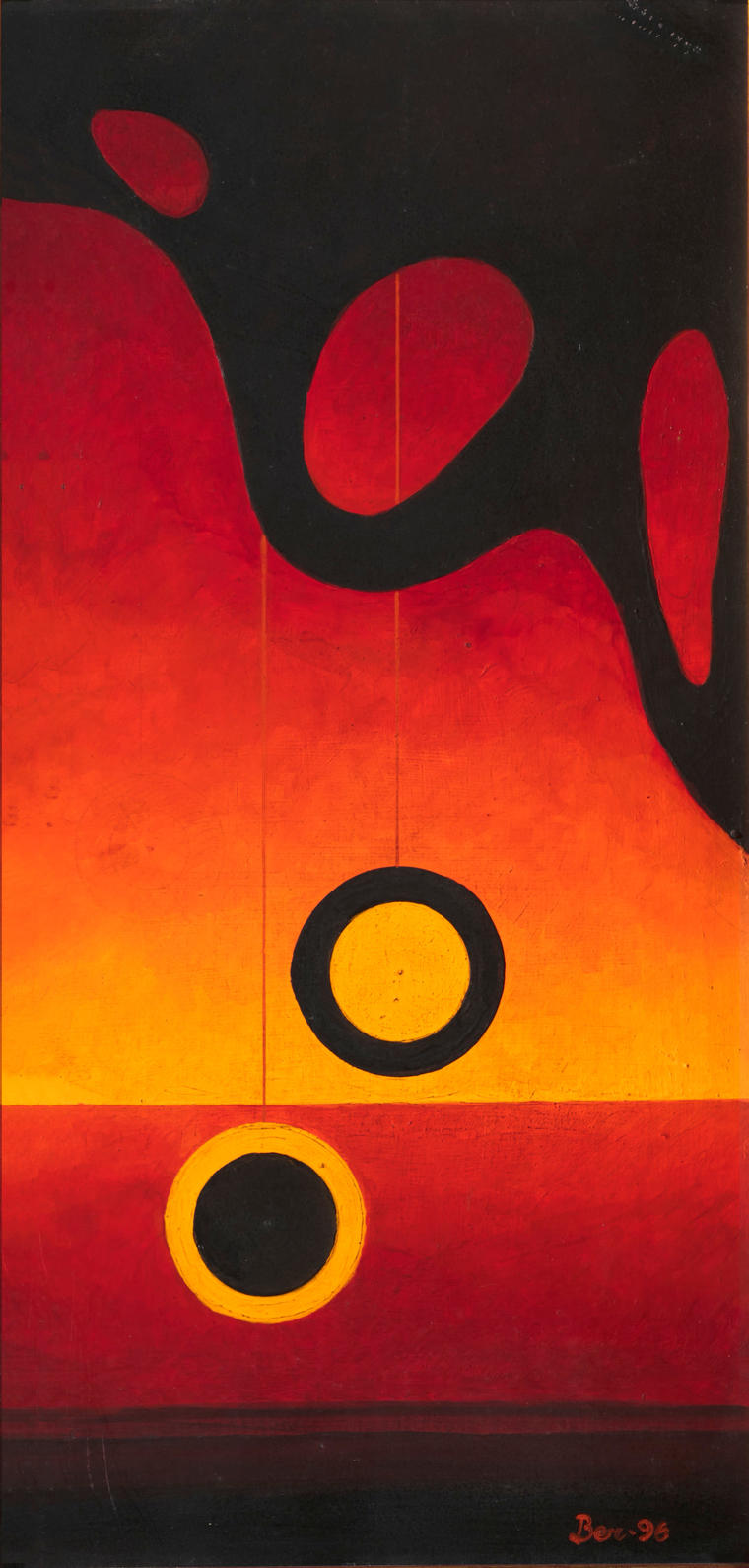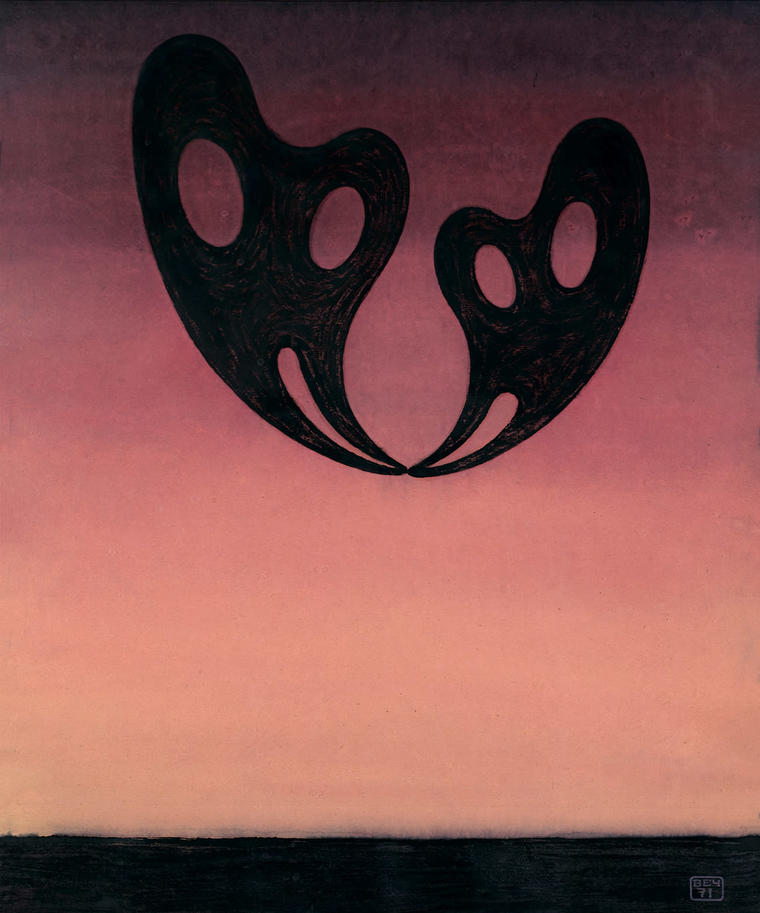
The presented painting refers to the experimental period of the artist's work. At the turn of the 50's and 60's, Vechtomov first tried himself in non-objective painting, creating compositions of bright lines and spots on small sheets of cardboard. Also at this tame, the artist was a member of the famous "Lianozovskaya group", which largely determined the development of the second wave of the Russian avant-garde.
Vechtomov's expressive фкешыешс manner, as well as his choice of rich color, is usually explained by the dramatic circumstances of the artist's biography: the war, the German prisoners' camps, and, finally, participation in partisan resistance. Contrasting flashes of his painting are a persistent reminder of the horrors of the war. In seemingly abstract composition, one can guess the outlines of a human figure embraced by the tongues of a flame. In abstraction, Vechtomov abandons the rich color palette that was characteristic for him in his youth, and, as in this work, operates only a few colors: his favorites – black, red and orange, they impart an emotional impulse. The drama and dynamics of the picture are attached to a lot of fast black lines that cover the paint layer. They can be perceived as ash or smoke, which condenses to blackness along the edges of the image, trapping a man of the 20th century. V

